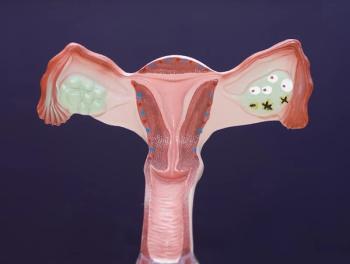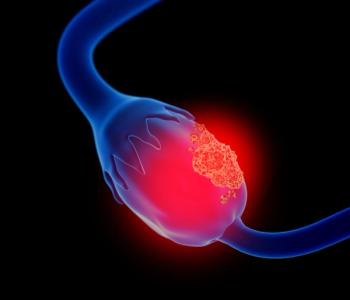
SGO 2019: Maintenance Rucaparib Effective for All Age Groups in Ovarian Cancer
The results of a post-hoc exploratory analysis of the phase III ARIEL3 trial were promising.
Rucaparib, a poly (ADP-ribose) polymerase (PARP) inhibitor, was effective as a maintenance therapy across all age groups of patients with recurrent ovarian cancer, according to the results of a post-hoc exploratory analysis of ARIEL3 presented at the 2019 Society of Gynecologic Oncology (SGO) 50th Annual Meeting on Women’s Cancer, held March 16–19 in Honolulu, Hawaii.
“It is an exciting time for us as gynecologic oncologists,”
The ARIEL3 trial (ClinicalTrials.gov identifier: NCT01968213) was a randomized, double-blind, placebo-controlled, multicenter, phase III study that evaluated rucaparib as a maintenance therapy in patients with platinum-sensitive, high-grade serous or endometrioid epithelial ovarian, primary peritoneal, or fallopian tube cancer. Patients were randomly assigned maintenance therapy with either rucaparib (n = 375) or placebo (n = 189) following completion of platinum-based chemotherapy.
A deleterious germline or somatic BRCA mutation was found to be most frequent among patients who were younger than 65 years (40.5% of rucaparib arm; 41.9% of placebo arm) compared with patients between 65 and 74 years (25.7% of rucaparib arm; 23.4% of placebo arm) or patients 75 years or older (20.0% of rucaparib arm; 25.0% of placebo arm).
Although rucaparib conferred a median PFS benefit across all subgroups, the benefit was most pronounced for the subgroup of patients younger than 65 years. For these patients, those on the rucaparib arm had a median PFS of 11.1 months compared with 5.4 months for those on the placebo arm (hazard ratio [HR] = 0.33; 95% CI, 0.25–0.43).
For the subgroup of patients between 65 and 74 years, the benefit was less so, with a median PFS of 8.3 months for the rucaparib arm and 5.3 months for the placebo arm (HR = 0.43; 95% CI, 0.29–0.64). Similar benefit was seen for the subgroup of patients 75 years or older, with a median PFS of 9.2 months for the rucaparib arm and 5.5 months for the placebo arm (HR = 0.47; 95% CI, 0.16–1.35).
Kebria explained the trend, saying that germline or somatic BRCA mutations decline as the age of the patient goes up, and PARP inhibitors are generally more effective in patients who have a germline BRCA mutation or homologous recombination deficiency. “This is the reason that we’ve seen a decline in the median progression-free survival in the older patients in this study,” he said.
The safety analysis revealed a high frequency of dose modification due to treatment-emergent adverse events (TEAEs) for rucaparib across all patient subgroups: 65.5% for patients younger than 65 years, 82.3% for patients between 65 and 74 years, and 83.3% for patients 75 years or older. For rucaparib, nausea, asthenia, and vomiting were the most commonly reported non-hematologic TEAEs, and anemia and thrombocytopenia were the most commonly reported hematologic TEAEs.
“[The] adverse reaction profile of the drug matters a lot in a maintenance setting,” said Kebria. All the PARP inhibitors currently on the market have shown improved PFS in patients with platinum-sensitive recurrent ovarian cancer, and the safety profile of rucaparib is what differentiates it from the rest, he added.
“There is a high number of these patients that suffered from some of these side effects, such as nausea and vomiting. The rate is higher than what I’d like to see in a drug that’s used in a maintenance setting,” Kebria said. “We really don’t have any proof that these drugs improve overall survival, and we want to find drugs that improve progression-free survival while maintaining a good quality of life for these patients.”
Newsletter
Stay up to date on recent advances in the multidisciplinary approach to cancer.
















































































